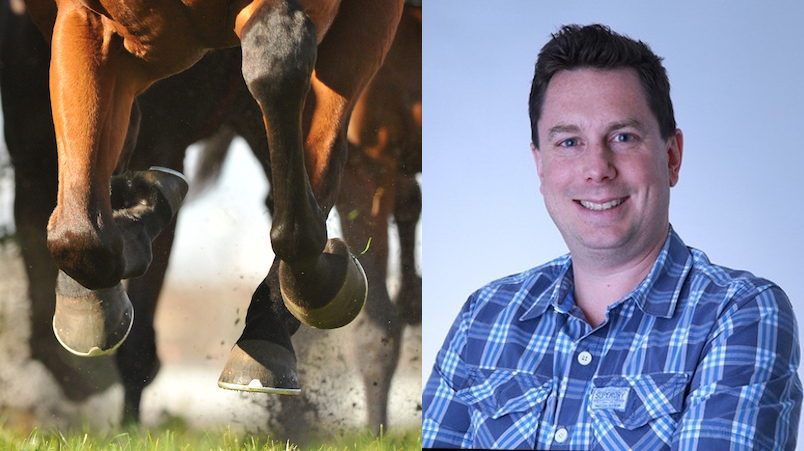In-housing: Betfair halves reach costs amid strategic shift, eyes attention push in bid to outsmart big-spending rivals

Horses for courses: Betfair had to rein-in ambitions but the in-housing shift is now delivering major cost efficiencies, says Brand and Media Manager Emil Mathias.
Betfair last year had plans for a big brand push in a bid to take share from free-spending rivals, part funded by in-housing savings and a hybrid model developed in conjunction with Lution. But shifting market dynamics blew the business case and necessitated a change of plan. So the firm mothballed above-the-line plans and creative developed by Bear Meets Eagle on Fire, and went all in on smarter digital tactics. It's paying off, per Brand and Media Manager Emil Mathias, with reach costs halved, and new customers unearthed in previously untapped niches.
What you need to know:
- Betfair partnered with consultancy Lution last year with big plans for a multimillion-dollar brand push part-funded by in-housing savings.
- Shifting market dynamics, free-spending competitors and a restructure necessitated a rethink.
- The Crown Resorts-owned company instead went hard on programmatic and has since more than halved reach costs while unearthing customers in new niches.
- Now the firm is trying to work out how to go further.
We planned to go to market and try to claw some share on a similar basis [to high spending rivals]. But it became apparent that the amount of money we would need was ever-increasing ... We would have had to spend an extra 50 per cent on top of our ad budget, making that business case tough.
Last year, Betfair had big plans for in-housing expansion and a multimillion-dollar brand campaign via creative indie hot shop Bear Meets Eagle on Fire – at least part-funded by in-housing efficiencies.
But a shifting market dynamic, Covid impacts and a budget-busting competitive set kicked those ambitions into touch, resulting in a restructure. “We had to adapt the strategy,” Betfair Brand and Media Manager Emil Mathias told Mi3.
The former MediaMath and Cadreon exec joined Betfair a year ago to handle its streamlined in-house media operation – with “sustained growth” and prudent cost management taking precedence over the planned big bang.
Race to the top
SMI figures put the total 2021 wagering ad spend via agencies at $218m. Big guns like Sportsbet spent a record amount at the back end of 2020 and into 2021, with competitors following suit.
“We planned to go to market and try to claw some share on a similar basis, but it became apparent that the amount of money we would need to spend was ever-increasing,” said Mathias. “Because we had to delay that approach, we would have had to spend an extra 50 per cent on top of our ad budget, making that business case tough.”
So Betfair mothballed above-the-line campaigns and went all out for efficiency and agility via the in-house team, shifting beyond activation to take on broader digital work across three in-house creative staff and three media specialists.
Bigger scope, lower costs
The media team had previously focused almost exclusively on retargeting.
“So we built out prospecting capability and worked through some really niche data and contextual strategies to buy inventory and find people in the market and interested,” said Mathias. “We also did some hyper-local targeting – people who visited TAB venues and race tracks…. So we unearthed some quite niche areas to find new users.”
Meanwhile, it struck direct programmatic deals with key racing and sports publishers, including SEN and racing.com, driving reach and frequency and operational efficiencies.
It’s paying off, with programmatic display reach costs more than halved. “It’s fallen 55 per cent since this time last year,” said Mathias. While cost efficiencies have started to bottom out, “we’re more than okay with that kind of improvement”, he added.
Attention push
But cheaper reach does not necessarily mean cheaper growth, with the likes of Binet & Field now suggesting that ESOV rules are now redundant without an attention layer on top.
“[Attention metrics] certainly are on the radar,” said Mathias, with Rob Brittain, co-author with Peter Field of the Ad Council of Australia’s report To ESOV and Beyond, consulting with Betfair prior to its decision to abort the big brand push.
Mathias said the firm has notched some wins with higher attention digital formats – programmatically served “rich media takeovers” during spring and summer. Produced by the in-house team, “they delivered far higher in-view time versus standard display”. Now the firm is trying to work out how to go further.
“We still have a preference to measure what a person who does view an ad does next,” said Mathias. “Aligning this and attention metrics together would be ideal. For example, optimising our digital display or video to higher attention channels and sites and seeing if this has a greater impact on lower-funnel tactics than when running cheaper, lower attention channels.”
If attention is an agenda item, can Betfair not run the big ads created by Bear Meets Eagle on Fire in some format?
“There are certain circumstances where they might see the light of day,” said Mathias. “We don’t have [using them on TV] in our current plans. But myself and Stephen Doig, who heads up our creative team, are looking at ways they could potentially be used across digital channels”.
